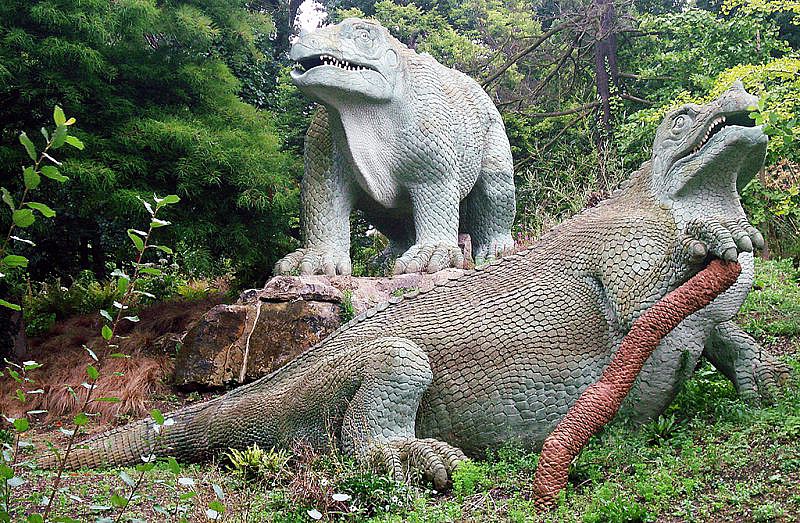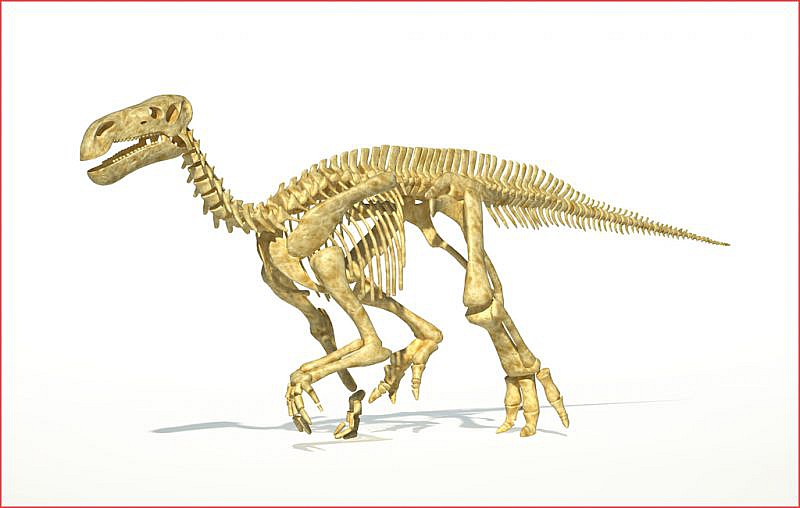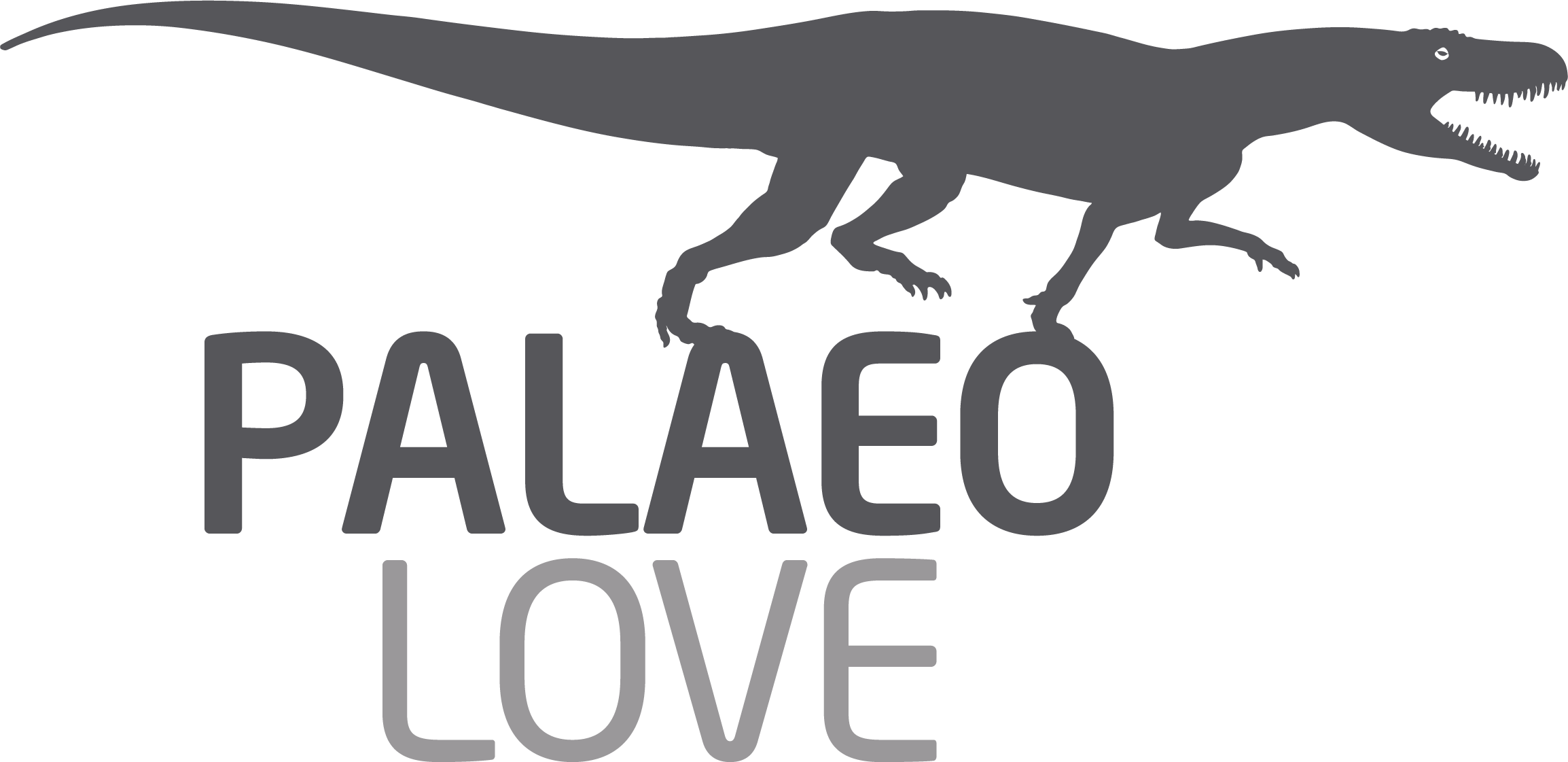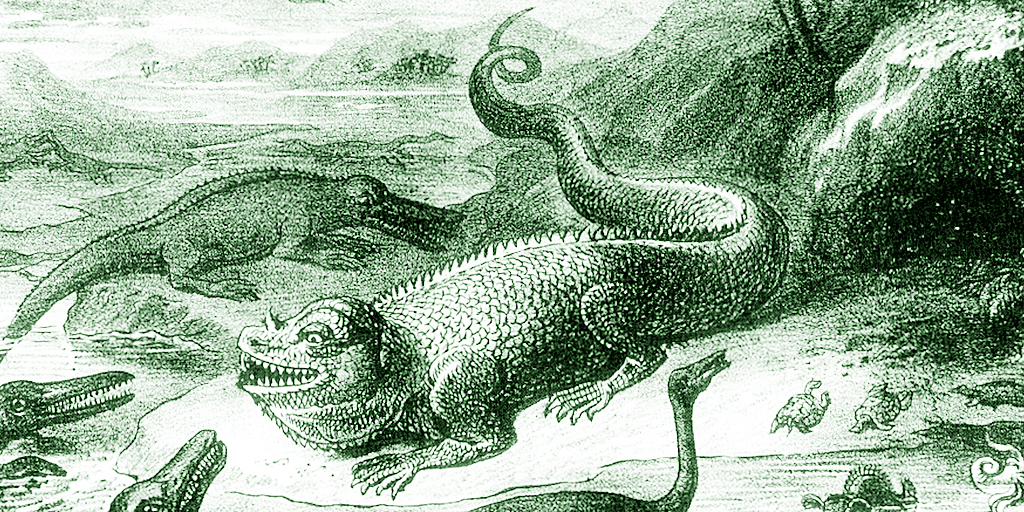Early Iguanodon Life Reconstructions
Iguanodon MANTELL, 1825 (Ornithopoda, Ornithischia) is the first herbivorous dinosaur that was scientifically described.
Gideon Algernon Mantell, a British country doctor, obstetrician, geologist and palaeontologist, and his wife Mary Ann collected the fossil material for Mantell’s initial publication on that ornithopod from Early Cretaceous strata of the Tilgate Forest in South East England. In the picture detail from the frontispiece published by RICHARDSON (1838) shown above Iguanodon is reconstructed – entirely in the spirit of Mantell – lizard-like and in a sprawling reptilian posture.
Mantell realised early that the morphology of the teeth of the dinosaur resembles those of the 1.5 m long green iguana Iguana iguana (also known as common or American iguana), which lives in trees in Central America, South America and the Caribbean and is mostly herbivorous. The name Iguanodon ( = iguana-tooth) for the newly discovered dinosaurian genus takes account of this morphological tooth analogy.
In the middle of the 19th century it became clear that Iguanodon had walked like a mammal and hence the dinosaur was reconstructed in an erect posture and as an ungulate creature. The heavy-bodied mammal-like reconstruction fully met the requirements of Richard Owen, at that time superintendent of the Natural History Department of the British Museum. The thumb of Iguanodon was still put on the nose or mouth of the fossil reptile in line with the horn of the rhinoceros.

Today, the supposed nose or mouth horn of Iguanodon is correctly identified as the thumb of the dinosaur, which was a conical spike that stuck out from the other digits and was most likely used as a defensive weapon. Moreover, Iguanodon nowadays is interpreted as a facultative biped animal. That means standing up and slow moves on all fours, swift runs only on its hindfeet after the forefeet had been raised and removed from locomotion.
First Update (28. July 2016)
After MCCARTHY & GILBERT (1994: 66) Hawkins personally examined one of the other «classic» iguanodon fossils as part of his research for the Crystal Palace models: «These restorations of the Iguanodon I [Hawkins] made from the measurements of the great Horsham specimen [from Sussex, South England], as the largest is called, …»
Second Update (5. September 2016)
Mrs Gideon Mantell, née Mary Ann Woodhouse, is known for finding the first Iguanodon teeth in the summer of 1822 in Tilgate Forest during a walk while her husband was visiting a patient. Recently this romanticized claim was put in doubt, both on her involvement and the date. Mary Ann and Gideon Algernon Mantell probably bought the first teeth from local quarrymen (MOODY et al. 2010: 119).
MOODY, R.T.J. et al. (2010) (eds): Dinosaurs and other extinct saurians: a historical perspective. Geological Society special publication 343: 1-394.
NORMAN, D.B. (2013): On the taxonomy and diversity of Wealden iguanodontian dinosaurs (Ornithischia: Ornithopoda). Revue de Paléobiologie 32 (2): 385-404.
PAUL, G.S. (2007): Turning the old into new: a separate genus for the gracile iguanodont from the Wealden of England. – In: K. CARPENTER (ed), Horns and beaks, Indiana University Press: 69-77.
PAUL, G. S. (2012): Notes on the rising diversity of iguanodont taxa, and iguanodonts named after Darwin, Huxley, and evolutionary science. – In: P.H. HURTADO et al. (eds), Actas de V Jornadas Internacionales sobre Paleontologia de Dinosaurios y su Entorno. Colectivo Arqueologico y Paleontologico de Salas, C.A.S., Salas de Los Infantes, Burgos 5: 123-133.
MCCARTHY, S. & GILBERT, M. (1994): The Crystal Palace dinosaurs: The story of the world’s first prehistoric sculptures. The Crystal Palaxe Foundation, London, 99 pp.
RICHARDSON, G.F. (1838): Sketches in prose and verse. Containing visits to the Mantellian Museum, descriptive of that collection: essays, tales, poems, &c. &c., 324 pp.


